Acer Aspire 3 (A317-33) review – although you can’t expect much at this price, it still delivers
 Today, we have a notebook that falls in a very appetizing spot in the market. It is incredibly low-budget, but it may actually surprise you. As you know, this segment of the market is full of cheap laptops that have poor built quality, terrible TN displays, and hardware that can’t offer much more than Web browsing, and media consumption.
Today, we have a notebook that falls in a very appetizing spot in the market. It is incredibly low-budget, but it may actually surprise you. As you know, this segment of the market is full of cheap laptops that have poor built quality, terrible TN displays, and hardware that can’t offer much more than Web browsing, and media consumption.
Thankfully, Acer paired the Aspire 3 (A317-33) with Intel CPUs, part of the Jasper Lake family. Currently, the top-tier device we could find (and the one we got) has the Pentium Silver N6000, which consumes only 6W of power, but is built on a 10nm architecture.
Also, the unit comes with a 17-inch 1080p IPS option, which is almost unprecedented in this price range. Other than that, the configuration is pretty basic, but we are pretty positive that it can do the job for unpretentious users.
You can check the prices and configurations in our Specs System: https://laptopmedia.com/series/acer-aspire-3-a317-33/
Contents
Specs Sheet
- HDD/SSD
- 以至于 2000GB SSD + 以至于 2000GB HDD
- M.2 槽
- 1x M.2 NVMe slot 看照片
- 内存
- up to 32GB
- 操作系统
- Windows 10 Home, Windows 11 Home, No OS, Windows 10 S
- 蓄电池
- 36.7Wh, 2-cell, 36.7Wh, 2-cell , 37.69Wh, 2-cell, 37Wh, 2-cell, 36Wh, 2-cell
- 车身材料
- Plastic / Polycarbonate
- 外形尺寸
- 403.5 x 263.7 x 20.9 mm (15.89" x 10.38" x 0.82")
- 重量
- 2.60 kg (5.7 lbs)
- 端口和连接性
- 2x USB Type-A
- 3.2 Gen 1 (5 Gbps)
- 1x USB Type-A
- 2.0
- HDMI
- 2.0
- 以太网LAN
- 10, 100, 1000 Mbit/s
- Wi-Fi
- 802.11ax
- 蓝牙
- 5.0
- 音频插孔
- 3.5mm Combo Jack
- 特点
- 指纹识别器
- 网络摄像机
- VGA
- 背光键盘
- optional
- 麦克风
- Digital Microphone
- 扬声器
- 2x Stereo Speakers
- 光驱
- 安全锁槽
全部 Acer Aspire 3 (A317-33) 配置
What’s in the box?
As expected, the packaging here is pretty modest – only some paper manuals, and a 45W power brick. Thankfully, the laptop is neatly tucked inside an antistatic protective cloth.
Design and construction
You shouldn’t be surprised when you hear that this notebook is entirely made out of plastic. Generally, this is the main way manufacturers cut costs, so we will let it slip by. Thankfully, its body measures 20.9mm in thickness and weighs 2.60 kg, which is quite good for a 17-incher. Also, the base is rather strong and it barely flexes when you twist it.
Unfortunately, you won’t be able to open the lid with a single hand. And while there is some flex from the lid, when you give it a twist, it is nothing to be worried about. Here is where we see a bit of an effort from Acer to give this budget machine a more modern look. Not only are the side bezels thin enough, but the lid acts as a lever, by lifting the base when you open the device. Also, you will find a camera right above the matte display. By the way, you have to know that the hinges here are a bit of a weak spot, and the lid bounces back and forth when you tap it.
Now, the keyboard is a standard unit, seen on pretty much every Aspire 3 laptop from the past couple of years. Its key travel is average, but we found the feedback to be clicky. Sadly, there is no backlight, and the “Up” and “Down” Arrow keys are pretty small, but on the bright side, you get a NumberPad section.
Then, there is the touchpad, which offers smooth gliding and somewhat decent tracking accuracy. Overall, we are happy, considering the price tag.
When you turn the laptop upside down, you will see a rather big ventilation grill, as well as the speaker cutouts. And hot air exhaustion, itself, happens from the backside of the base, and the air hits the Acer logo on the bottom bezel of the screen.
Ports
On the left side of the notebook, you will find the power plug, an RJ-45 connector, an HDMI connector, and two USB Type-A 3.2 (Gen. 1) ports. Then, on the right, there is a Kensington lock, a USB Type-A 2.0 port, and an audio jack.
Disassembly, upgrade options, and maintenance
Getting inside of this notebook is not difficult at all. You just need to undo 14 Phillips-head screws and pry the bottom panel away from the chassis.
Perhaps expectedly, the battery pack is a bit small, having a capacity of 37Wh.
According to Acer, this laptop can hold up to 16GB of DDR4 memory in dual-channel mode, thanks to its two RAM SODIMM slots. However, we think that it won’t have an issue with 32GB as well. Additionally, there is a single M.2 NVMe slot for storage, and the huge empty space to the left of the cooling fan can be taken by a 2.5-inch SATA device. Unfortunately, our unit lacked the needed accessories, like holding brackets and cables.
Surprisingly, we see an active cooling solution. There is a single heat pipe, as well as a fan with a decent size.
Display quality
Acer Aspire 3 (A317-33) has a Full HD IPS panel, made by LG with a model number LP173WF5-SPZ1 (LGD0671). Its diagonal is 17.3″ (43.94 cm), and the resolution 1920 х 1080 pixels. The screen ratio is 16:9, and we are looking at a pixel density of – 127 ppi, and a pitch of 0.2 х 0.2 mm. The screen turns into Retina when viewed at distance equal to or greater than 69cm (27″) (from this distance one’s eye stops differentiating the separate pixels, and it is normal for looking at a laptop).

Viewing angles are comfortable. We offer images at 45° to evaluate image quality.

The measured maximum brightness of 299 nits in the middle of the screen and 286 nits as an average for the whole area, with a maximum deviation of 10%. The Correlated Color Temperature on a white screen is 6470K – almost matching the optimal for the sRGB standard of 6500K.
In the illustration below you can see how the display performs from a uniformity perspective. In other words, the leakage of light from the light source.
Values of dE2000 over 4.0 should not occur, and this parameter is one of the first you should check if you intend to use the laptop for color-sensitive work. The contrast ratio is good – 1080:1.
To make sure we are on the same page, we would like to give you a little introduction to the sRGB color gamut and the Adobe RGB. To start, there’s the CIE 1976 Uniform Chromaticity Diagram that represents the visible specter of colors by the human eye, giving you a better perception of the color gamut coverage and the color accuracy.
Inside the black triangle, you will see the standard color gamut (sRGB) that is being used by millions of people on HDTV and on the web. As for the Adobe RGB, this is used in professional cameras, monitors, etc for printing. Colors inside the black triangle are used by everyone and this is the essential part of the color quality and color accuracy of a mainstream notebook.
Still, we’ve included other color spaces like the famous DCI-P3 standard used by movie studios, as well as the digital UHD Rec.2020 standard. Rec.2020, however, is still a thing of the future and it’s difficult for today’s displays to cover that well. We’ve also included the so-called Michael Pointer gamut, or Pointer’s gamut, which represents the colors that naturally occur around us every day.
The yellow dotted line shows Acer Aspire 3 (A317-33)’s color gamut coverage.
Its display covers only 52% of the sRGB/ITU-R BT.709 (web/HDTV standard) in CIE1976.
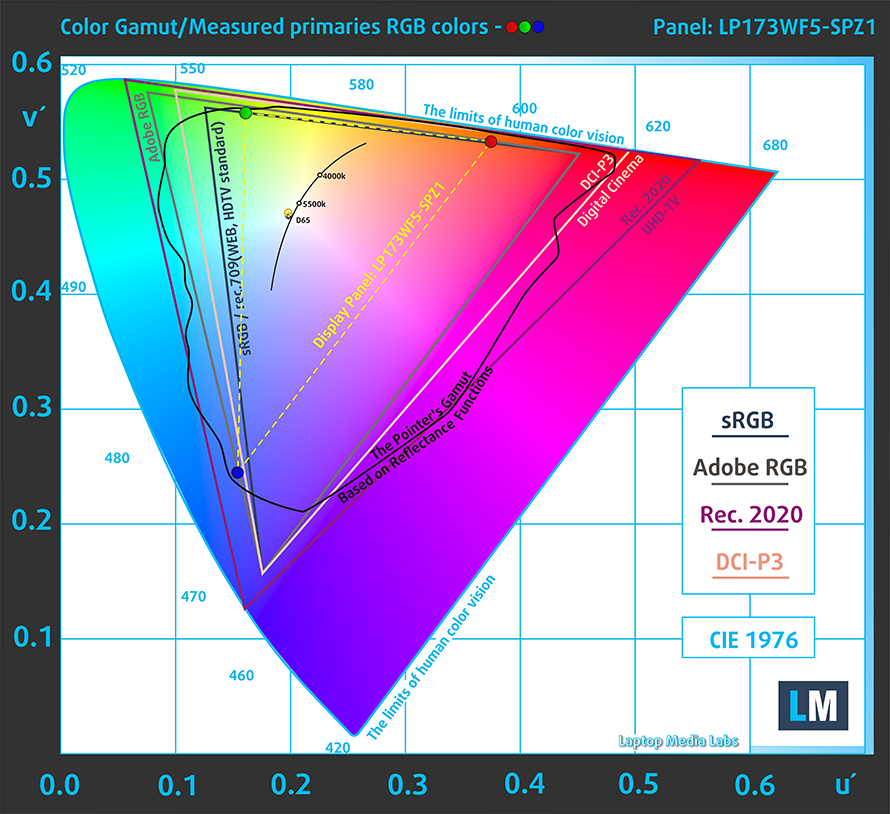
Our “Design and Gaming” profile delivers optimal color temperature (6500K) at 140 cd/m2 luminance and sRGB gamma mode.
We tested the accuracy of the display with 24 commonly used colors like light and dark human skin, blue sky, green grass, orange, etc. You can check out the results at factory condition and also, with the “Design and Gaming” profile.
Below you can compare the scores of Acer Aspire 3 (A317-33) with the default settings (left), and with the “Gaming and Web design” profile (right).
The next figure shows how well the display is able to reproduce really dark parts of an image, which is essential when watching movies or playing games in low ambient light.
The left side of the image represents the display with stock settings, while the right one is with the “Gaming and Web Design” profile activated. On the horizontal axis, you will find the grayscale, and on the vertical axis – the luminance of the display. On the two graphs below you can easily check for yourself how your display handles the darkest nuances but keep in mind that this also depends on the settings of your current display, the calibration, the viewing angle, and the surrounding light conditions.

Response time (Gaming capabilities)
We test the reaction time of the pixels with the usual “black-to-white” and “white-to-black” method from 10% to 90% and vice versa.
We recorded Fall Time + Rise Time = 30 ms.

After that, we test the reaction time of the pixels with the usual “Gray-to-Gray” method from 50% White to 80% White and vice versa between 10% and 90% of the amplitude.

PWM (Screen flickering)
Pulse-width modulation (PWM) is an easy way to control monitor brightness. When you lower the brightness, the light intensity of the backlight is not lowered, but instead turned off and on by the electronics with a frequency indistinguishable to the human eye. In these light impulses, the light/no-light time ratio varies, while brightness remains unchanged, which is harmful to your eyes. You can read more about that in our dedicated article on PWM.
Acer Aspire 3 (A317-33)’s display doesn’t use PWM for brightness adjustment at any level. This means it is comfortable for long working periods, without presenting any harm to your eyes in this aspect.

Blue light emissions
Installing our Health-Guard profile not only eliminates PWM but also reduces the harmful Blue Light emissions while keeping the colors of the screen perceptually accurate. If you’re not familiar with the Blue light, the TL;DR version is – emissions that negatively affect your eyes, skin, and your whole body. You can find more information about that in our dedicated article on Blue Light.
Conclusion
Acer Aspire 3 (A317-33)’s IPS panel has a Full HD resolution, comfortable viewing angles, and a good contrast ratio. Thankfully, the screen doesn’t flicker at any brightness level, and the only disadvantage is the low color coverage of about 52% of the sRGB gamut.
Buy our profiles
Since our profiles are tailored for each individual display model, this article and its respective profile package are meant for Acer Aspire 3 (A317-33) configurations with 17.3″ FHD IPS LG LP173WF5-SPZ1 (LGD0671).
*Should you have problems with downloading the purchased file, try using a different browser to open the link you’ll receive via e-mail. If the download target is a .php file instead of an archive, change the file extension to .zip or contact us at [email protected].
Read more about the profiles HERE.
除了获得高效和健康友好的配置文件,购买LaptopMedia的产品,您还可以支持我们实验室的发展,我们在实验室测试设备,以产生最客观的评论。

办公室工作
Office Work应该主要由那些花大部分时间看文本、表格或仅仅是浏览的用户使用。该配置文件旨在通过保持平坦的伽玛曲线(2.20)、本机色温和精确的色彩来提供更好的清晰度。

设计与游戏
本资料针对专业处理色彩的设计师,以及游戏和电影。设计与游戏》将显示面板发挥到了极致,使其在白点D65的网页和高清电视的sRGB IEC61966-2-1标准中尽可能准确。

以33%的折扣获得所有3份资料
Sound
Acer Aspire 3 (A317-33)’s speakers produce somewhat decent quality audio. However, the low, mid, and high tones all have some slight deviations from clarity.

Drivers
All of the drivers and utilities for this notebook can be downloaded from here: https://www.acer.com/ac/en/US/content/support-product/8838?b=1
Battery
Now, we conduct the battery tests with Windows Better performance setting turned on, screen brightness adjusted to 120 nits, and all other programs turned off except for the one we are testing the notebook with. The 37Wh battery found inside of this notebook lasts for 6 hours and 58 minutes of Web browsing, and 5 hours and 31 minutes of video playback.
为了模拟真实情况,我们使用自己的脚本自动浏览了70多个网站。
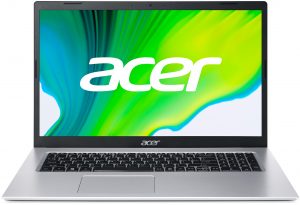
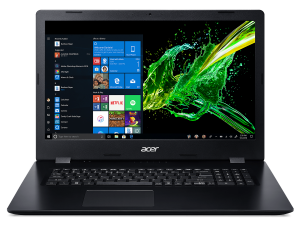


对于这样的每一次测试,我们都使用相同的高清视频。




CPU options
As of the moment of writing this review, we were able to find this notebook with three processor choices – the Intel Celeron N4500, Celeron N5100, and the Pentium Silver N6000. They are all part of the new Jasper Lake lineup of CPUs, built on a 10nm node.
GPU options
On the other side, you don’t really have any options for graphics, other than what your processor comes with.
结果来自3DMark:Fire Strike(图形)基准测试(分数越高越好)。
Gaming tests

| CS:GO | HD 1080p, Low (Check settings) | HD 1080p, Medium (Check settings) | HD 1080p, MAX (Check settings) |
|---|---|---|---|
| Average FPS | 31 fps | 15 fps | – fps |

| DOTA 2 | HD 1080p, Low (Check settings) | HD 1080p, Normal (Check settings) | HD 1080p, High (Check settings) |
|---|---|---|---|
| Average FPS | 40 fps | 23 fps | – fps |
Temperatures and comfort
Max CPU load
In this test we use 100% on the CPU cores, monitoring their frequencies and chip temperature. The first column shows a computer’s reaction to a short load (2-10 seconds), the second column simulates a serious task (between 15 and 30 seconds), and the third column is a good indicator of how good the laptop is for long loads such as video rendering.
Average core frequency (base frequency + X); CPU temp.
| Intel Pentium Silver N6000 (6W TDP) | 0:02 – 0:10 sec | 0:15 – 0:30 sec | 10:00 – 15:00 min |
|---|---|---|---|
| Acer Aspire 3 (A317-33) | 2.98 GHz (B+171%) @ 63°C @ 16W | 2.02 GHz (B+84%) @ 52°C @ 7W | 2.13 GHz (B+94%) @ 52°C @ 7W |
So, this notebook’s processor manages to work at 16W for about 10-15 seconds, before it power throttles down to 7W for the rest of the test. As you can see the temperatures were very low, even under extreme workload
Comfort during full load
And the low internal temperatures lead to low external ones, with the fan being almost inaudible.
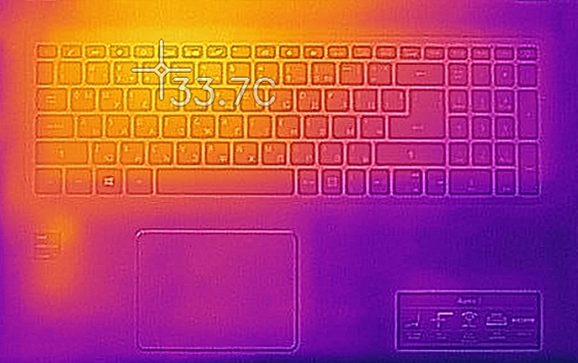
Verdict
Perhaps you have noticed that we used the phrase “for the price” quite a lot today. And this is for a reason – the Aspire 3 (A317-33) is so affordable, that pretty much everyone can afford it. And although it comes with a processor that has a TDP of merely 6W, the performance it offers is comparable to that of an Intel Core i3 from no more than two years ago.
Yes, the Pentium Silver N6000 has all it takes to drive you through your daily needs, especially with the help of the M.2 NVMe SSD inside. Speaking of which, you can easily upgrade the memory via two RAM SODIMM slots, and some units come with a 2.5-inch SATA drive bay.
However, the real dealmaker here is the screen. Acer Aspire 3 (A317-33) in the configuration we tested has an IPS panel (LG LP173WF5-SPZ1 (LGD0671)) with a Full HD resolution, comfortable viewing angles, and a good contrast ratio. Thankfully, the screen doesn’t flicker at any brightness level, and the only disadvantage is the low color coverage of about 52% of the sRGB gamut. Nevertheless, we are grateful to see a laptop of this price range, equipped with a 1080p IPS panel.
Of course, there are some drawbacks, which should be noted. Undoubtedly, the biggest cost-saving measure is the build materials choice. The laptop is made entirely out of plastic, but if we have to be honest, the quality is not that bad.
Also, it lacks a USB Type-C port and a MicroSD card slot, which is a bummer. Combine this with an average keyboard, and a battery life that goes about 7 hours of Web browsing and 5 hours and a half of video playback, and you get a pretty uninspiring laptop.
Then again, we have to consider the price tag. For the money they ask, Acer has delivered quite a viable everyday laptop, and we are pretty confident that it is one of the best in its niche.
Pros
- Adequate pricing
- 1x M.2 NVMe + 2x RAM SODIMM
- Budget processor with a decent amount of performance
- Doesn’t use PWM for brightness adjustment (LG LP173WF5-SPZ1)
Cons
- Battery life is only average
- No MicroSD card slot and USB Type-C port
- Covers only 52% of the sRGB gamut (LG LP173WF5-SPZ1)
You can check the prices and configurations in our Specs System: https://laptopmedia.com/series/acer-aspire-3-a317-33/
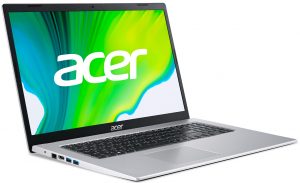
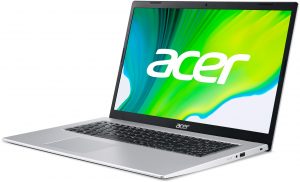
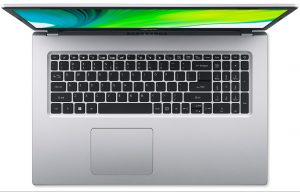
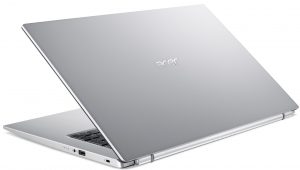








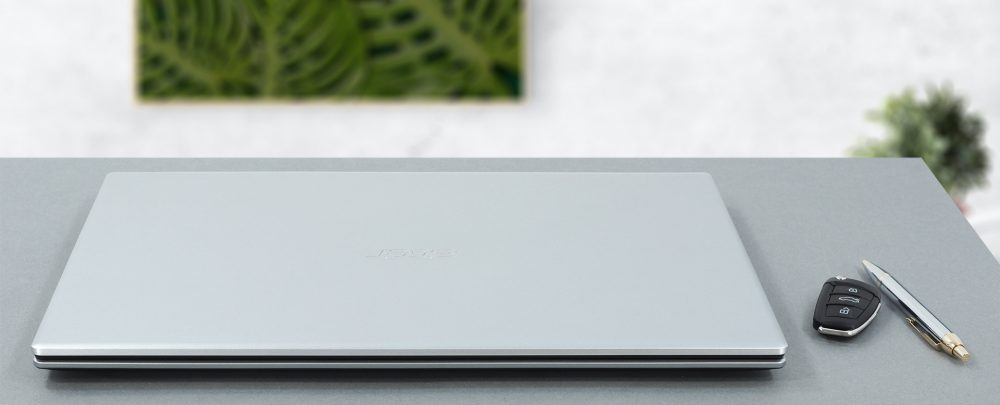
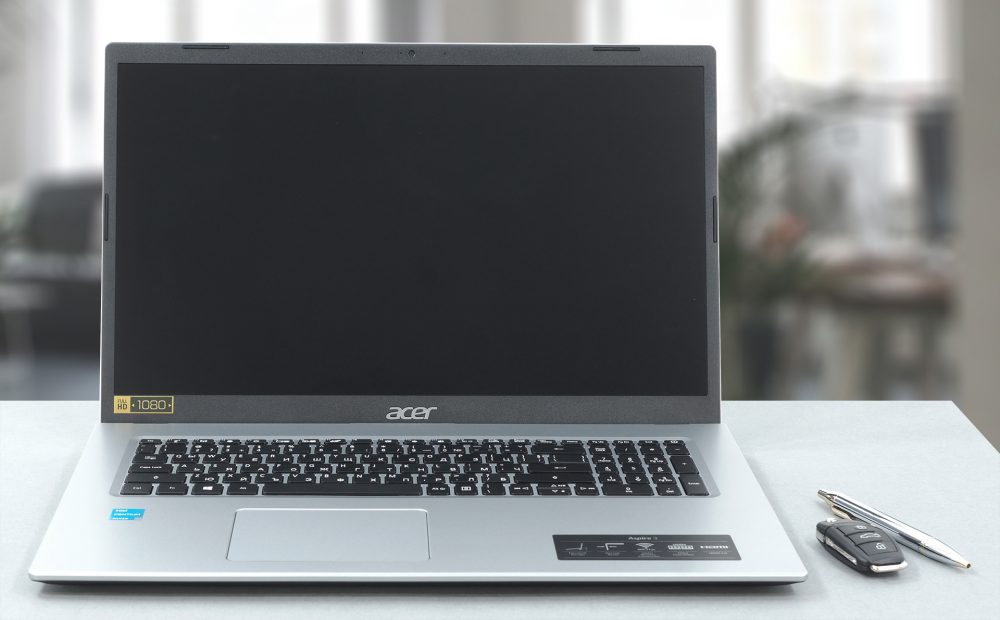

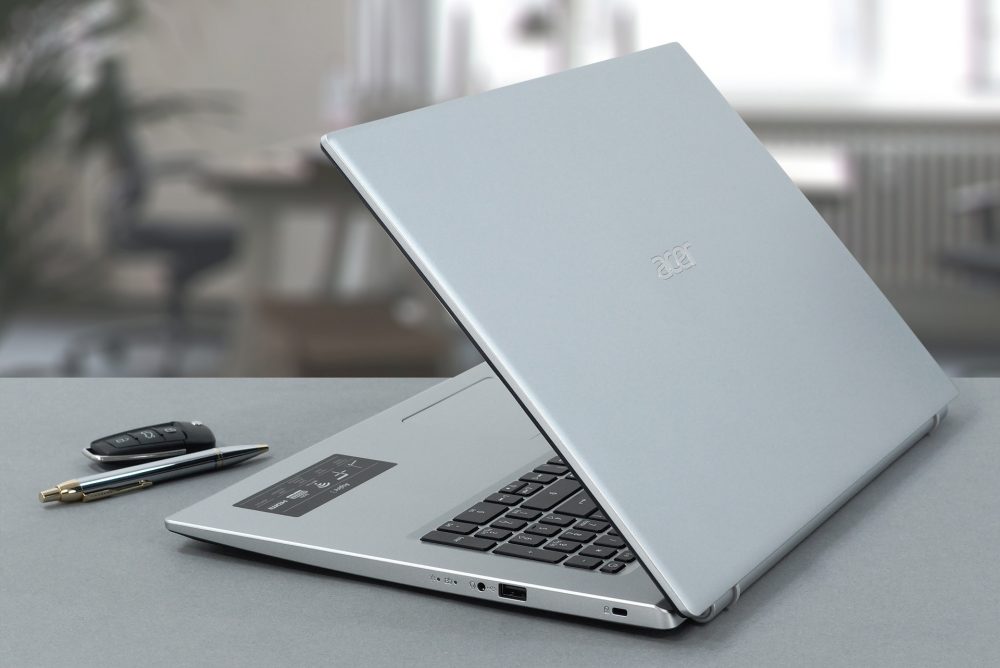
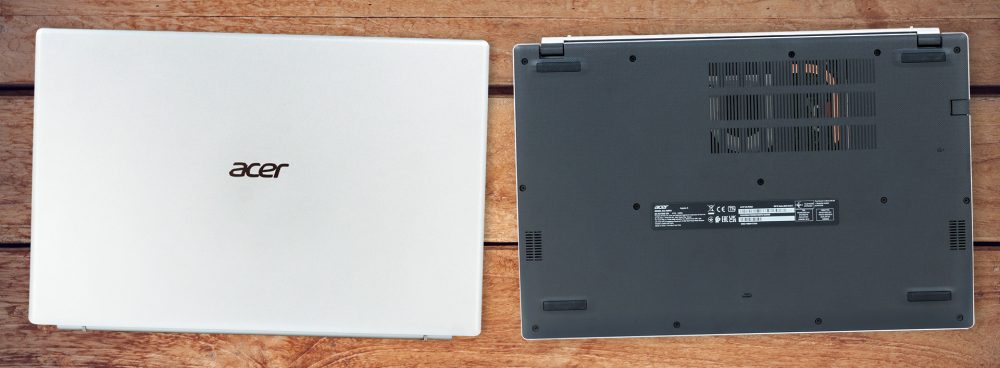



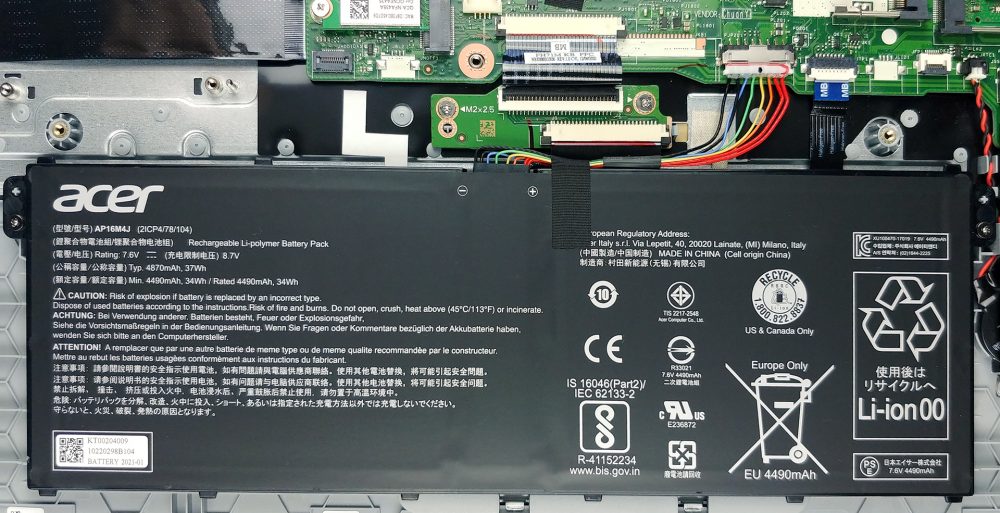
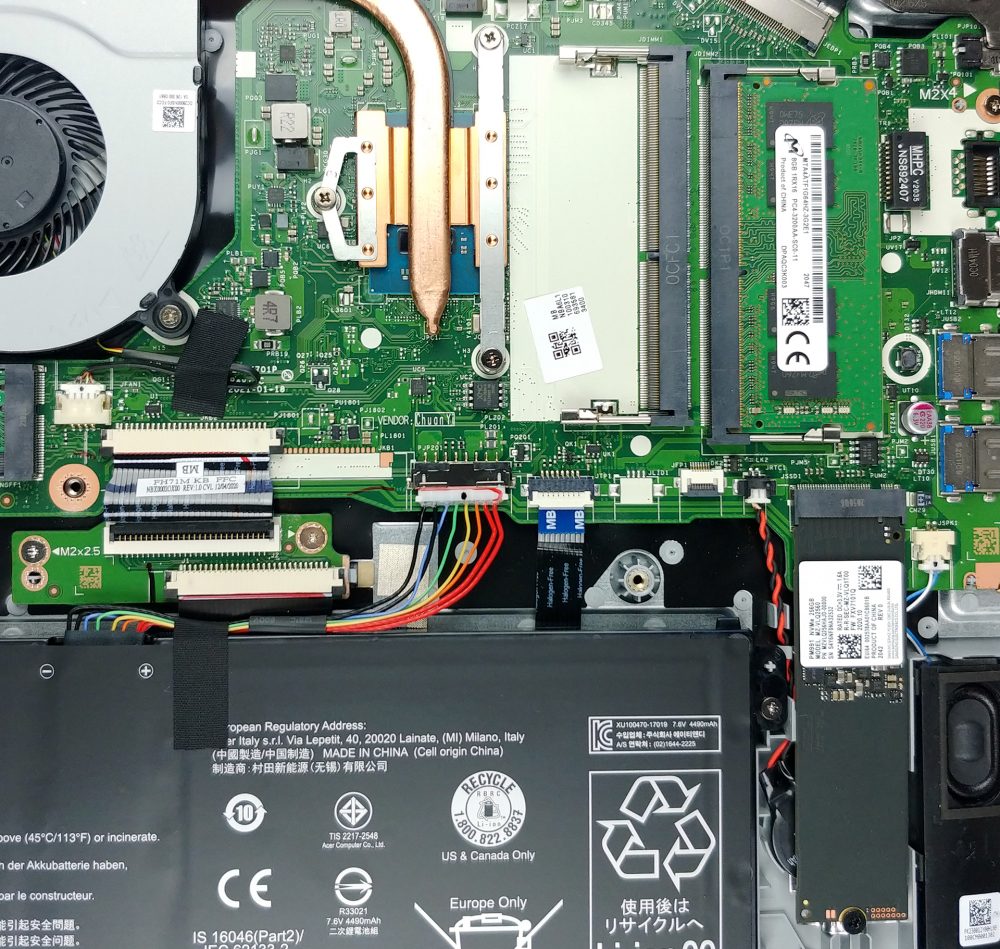
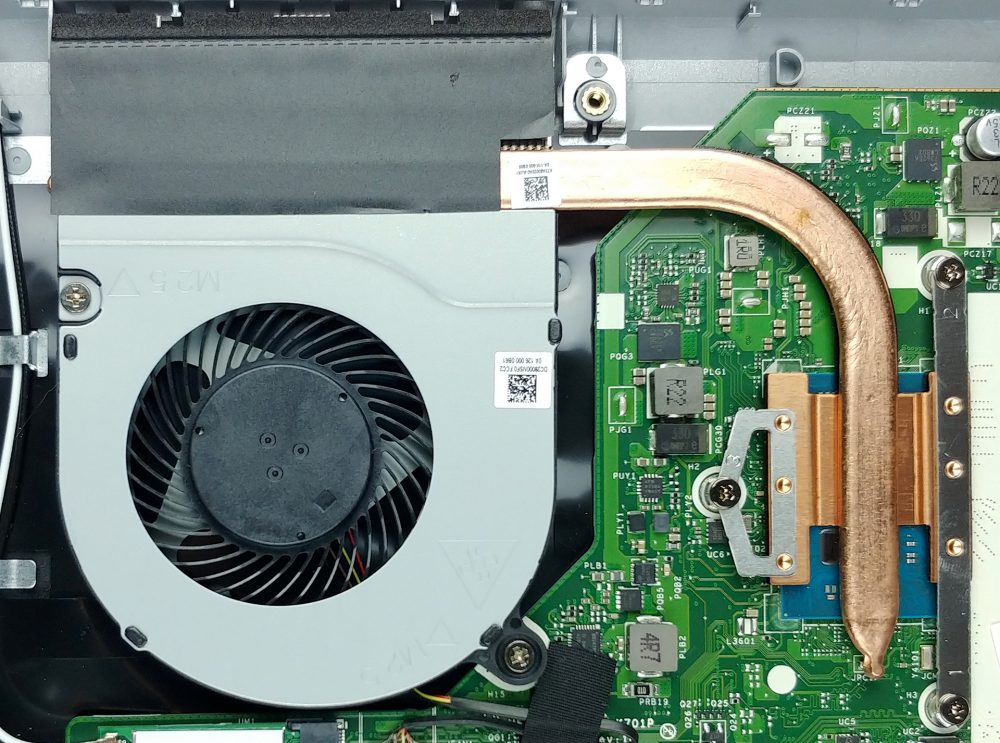




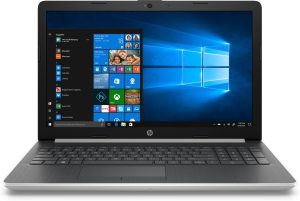









best intel architecture by far.